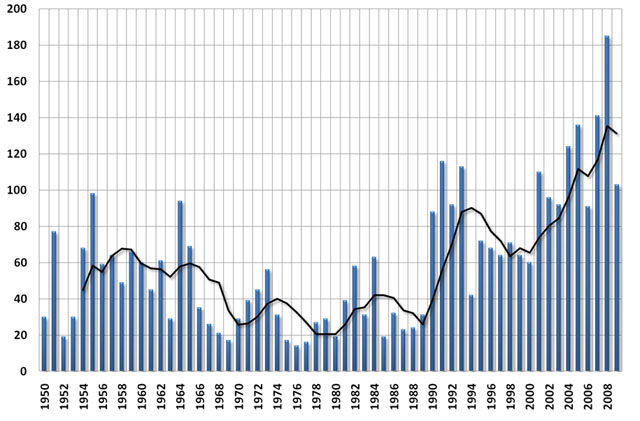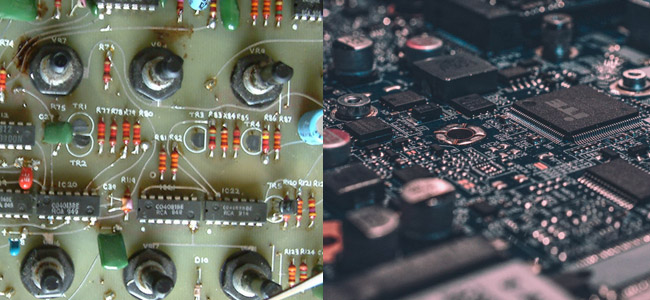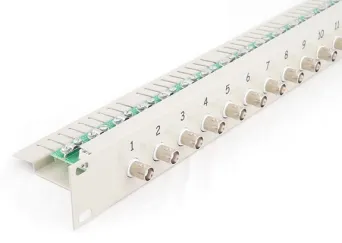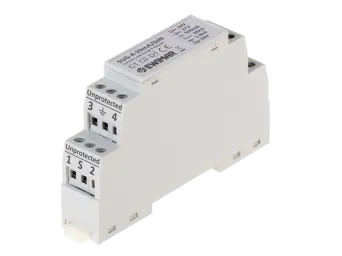Why surge protection devices should be used?
There are many arguments in favor of using surge protection systems in electrical installations and low voltage installations.
1. Growing number of lightning discharges

Source: https://www.weather.gov
Climate change has been evident since the 1980s, resulting in an increasing number of storms and the accompanying lightning strikes. Weather anomalies cause storms to occur at unusual times of the year, such as during winter. The increasing number of storms increases the intensity of lightning and the risk of lightning strikes in the same place up to several times a year.
2. Miniaturization in electronics
Miniaturization of electronic devices brings many benefits related to their computing efficiency and ergonomics of use. Such as:
- Increased computing power
- Reducing the dimensions, allowing mobility
- Reduced energy consumption and lower energy losses
- Less consumption of precious materials
- Lower prices of electronic devices
The miniaturization of electronics reduces the voltage supply and reduces the efficiency of power-to-heat conversion and the ability to dissipate it by the components. These factors make them much more vulnerable to overvoltage than electronic devices manufactured 30 years ago.

Comparison of the advancement and miniaturization of electronics from the 1980s with the electronics from 2018.
3. The use of impulse power supplies
Growing reductions in greenhouse gas emissions force manufacturers of electronic devices to use power supplies with very high efficiency. The required efficiencies are achieved only in impulse power supplies, connected directly to the mains. Unlike transformer power supplies, impulse power supplies are very sensitive to a temporary increase in the supply voltage - after exceeding the permissible values even for several dozen microseconds, the transistor key is blocked and the power supply is permanently damaged. Often, when a impulse power supply fails, a high voltage pulse is generated, which damages the electronic device supplied from it.
4. Lack of protection in electronic devices
As a result of the decline in the value of electronic products, manufacturers are relinquishing effective surge protection to get more sales. Some manufacturers, to encourage buyers to choose their products, provide information about the installed surge protectors. In practice, these are 100W (8 / 20us) surge protection solutions, which can be classified as protection against electrostatic charges coming from fingers or as a stun gun that generates high voltage but negligible surge current. The installation of high-power electronic protection components directly on the electronic board will act as an effective arrester. Due to the use of a very thin copper layer, even very wide paths can be damaged during overvoltage. The use of a thick copper layer for modern electronics will make it impossible to technically make printed circuits for integrated circuits with a large scale of integration.
5. Temporary or permanent loss of a process, production, control or supervision
In systems that are designed for continuous operation, a temporary interruption as a result of overvoltage causes losses many times exceeding the value of overvoltage protection devices and installations that are protected by them:
- In the production process - downtime can cause enormous losses due to non-delivery of manufactured goods.
- In measuring systems, manual reading is required or services/utilities cannot be provided.
- In alarm or CCTV systems - temporary lack of supervision and registration, which may cause losses as a result
of burglary, assault or life-threatening.
6. Defects that are not subject to repair or warranty replacement
Faults caused by overvoltages are usually not recognized, as stated in the warranty conditions. Very often, the manufacturer or importer does not take the risk of repairing devices after overvoltage, because despite their apparent operation, they may become damaged after some time or their operation may be inappropriate. In this case, the investor must purchase a new product or device at his own expense. Depending on the type of device, it must be reinstalled, commissioned, programmed and trained in operation, which creates additional financial burdens.
7. No compensation for losses not related to damaged devices
Damage to electronic systems at the time of discharge carries the risk of loss of property or other losses resulting from their inoperability. Many investors limit funds for surge protection, suggesting purchasing insurance against random events for these installations. In the case of a video monitoring system, he will receive compensation for damaged equipment, but the losses resulting from the burglary that resulted from it are no longer covered and the level of losses is sometimes many times higher than the value of the entire CCTV system. There are also cases of underestimation of compensation by insurers, defined as negligence in safety systems due to failure to use protection devices.
8. The risk of bringing electric charge to other installations
Electronic devices fully installed inside buildings are largely protected against large electric charges by a natural obstacles such as walls. If any unsecured part of the installation or equipment is installed outside, there is a very high risk of a spark overs from the structure of buildings, poles, etc., as a result of which the electric charge will penetrate through the wiring inside the building. The generated potential, looking for an way to the ground, will create further spark-overs, destroying electronic devices and even wiring inside the building.
9. Damage despite the lightning protection installation
The lightning protection installation is an important element of the building's protective installation, which, together with the appropriate grounding, carries away the main surge current, reaching tens or even hundreds of kiloamperes. This prevents electricity from flowing through roof structures and other non-electrical installations, preventing fire and electric shock to people inside the building. However, there are studies confirming that even the best lightning protection installations are able to dissipate only half of the surge charge and the rest is dissipated inside the building in all installations that can conduct electricity. The level of the potentials present is so high that electronic devices will be damaged without the appropriate protection devices. It should be assumed that the lightning rod is by no means a sufficient installation to protect the electronics against lightning. Only when it is combined with surge protection systems (SPD) will it create comprehensive protection.
10. Loss of credibility in the eyes of the investor
There is still a large number of companies that exclude SPD(surge protection devices) at the design or installation stage, counting on a more attractive price offer or on profits related to the replacement of equipment damaged after a storm. After the first event related to the damage to electronic equipment and its consequences, the investor looks for solutions that can protect the installation against such an event in the future. If it notices that the design / installation company has not demonstrated professionalism in the field of threats that have been known for many years, the company loses trust in the eyes of the investor and does not receive further orders from him. It is best to include SPD devices in the offer even as an option and the investor should be fully aware of the risks involved in resigning from surge protection.
Entire content of this article together with photos is the property of Ewimar Sp. z o.o. and is legally protected. Prohibition of copying and sharing in part or in whole, or use in publications and public presentations.




